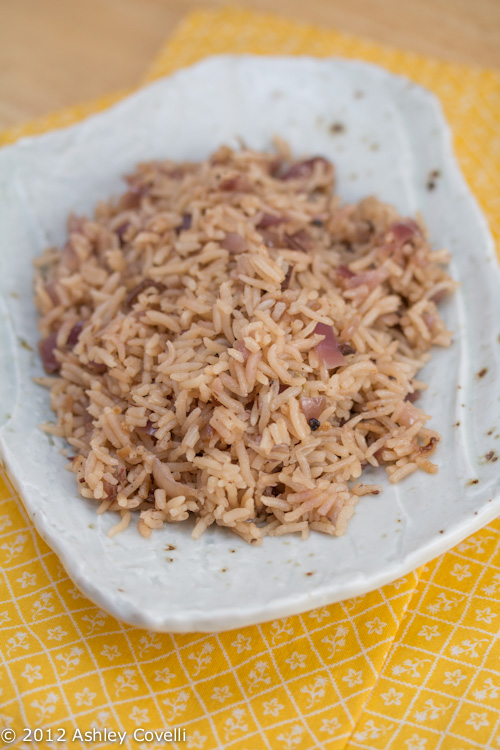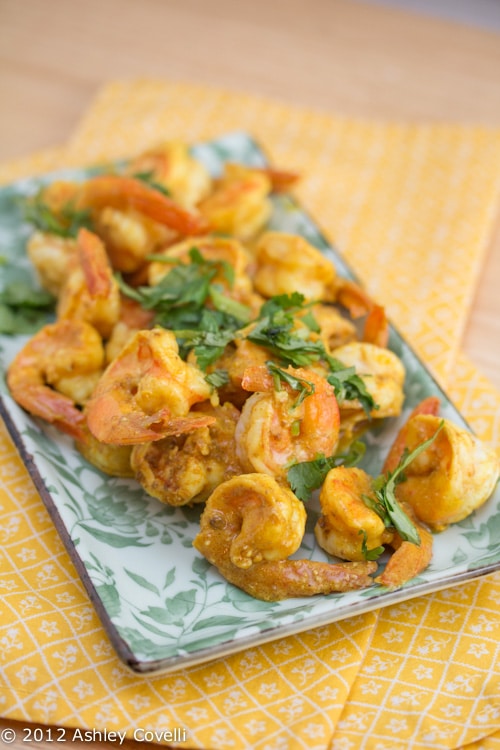660 Curries: The Gateway to Indian Cooking – Raghaven Iyer
Serves 6
Ingredients
- 1 cup Indian or Pakistani white basmati rice
- ½ teaspoon black peppercorns
- 8 to 10 green or white cardamom pods, to taste
- 6 whole cloves
- 2 cinnamon sticks (each 3 inches long), broken into smaller pieces
- 2 tablespoons Ghee or canola oil
- 1 large red onion, finely chopped
- 1 teaspoon white granulated sugar
- 1 ½ teaspoons coarse kosher or sea salt
Directions
- Place the rice in a medium-size bowl. Fill the bowl halfway with water, to cover the rice. Gently rub the slender grains through your fingers, without breaking them, to wash off any dust or light foreign objects (like loose husks), which will float to the surface. The water will become cloudy. Drain this water. Repeat three or four times, until the water remains relatively clear, drain. Now fill the bowl halfway with cold water and let it sit at room temperature until the grains soften, 20 to 30 minutes.
- While the rice is soaking, combine the peppercorns, cardamom pods, cloves, and cinnamon pieces in a mortar. Pound the spices with the pestle, breaking them down into smaller chips and releasing their aromatic oils.
- Heat the ghee in a medium-size saucepan over medium heat. Add the onion, sugar, and pounded spices, and stir-fry until the onion turns dark purple-brown and soft, 10 to 15 minutes.
- Drain the rice and add it to the onion mixture, tossing them together gently. Pour in 1 1/2 cups cold water and add the salt. Stir the rice once to incorporate the ingredients. Raise the heat to medium-high and cook until the water has evaporated from the surface and craters are starting to appear in the rice, 5 to 8 minutes. Now (and only now) stir once to bring the partially cooked layer from the bottom of the pan to the surface. Cover the pan with a tight-fitting lid and reduce the heat to the lowest possible setting. Cook for 8 to 10 minutes (8 for an electric burner, 10 for a gas burner). Then turn off the heat and let the pan stand on that burner, undisturbed, for 10 minutes.
- Remove the lid, fluff the rice with a fork, and serve.



